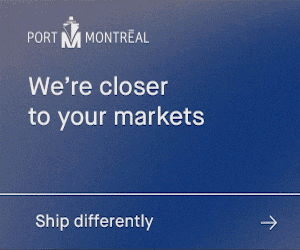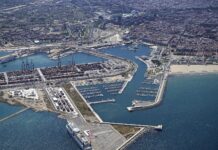
Shipping lines affiliated to the World Shipping Council (WSC) have called on the International Maritime Organization (IMO) to adopt the industry’s proposal to add US$2/tonne to the price of bunker fuel to raise money for a research fund that will develop zero-carbon technology.
The IMO’s Marine Environment Protection Committee (MEPC) 75 will meet this week, from 16-20 November, to debate proposals put forward by the Intersessional Working Group, which met in late October, that will see ship owners required to monitor and reduce emissions from existing vessels.
An IMO statement last month, said that there are two new proposals from the Intersessional Working Group, a technical requirement to reduce carbon intensity, based on a new Energy Efficiency Existing Ship Index (EEXI); and the operational carbon intensity reduction requirements, based on a new operational carbon intensity indicator (CII).
However, the shipping lines, in the form of the WSC, argue, “The only way we will decarbonise deep-sea shipping is through identifying and developing the fuels of the future. We have no time to waste,” said John Butler, CEO of World Shipping Council.
According to the WSC the US$2/tonne on bunker fuel would raise US$5 billion over a 10-year period that will fund research organisation, International Maritime Research and Development Board (IMRB), with the fund and research programme overseen by the IMO.
“The R&D programme would be managed through a non-governmental research and development organisation,” said a WSC statement, adding that “The co-sponsors emphasise that for the proposal to work, the R&D contributions need to be compulsory via an IMO regulation, to ensure that all shipping companies globally contribute, in a fair and equitable manner, and that the necessary funds will be generated to achieve the programme’s objectives.”
With potential solutions to the carbon conundrum such as hydrogen, ammonia and electric power offering a potential path to zero-emission shipping the WSC believes that a dedicated and focused research facility will have as its aim to make itself redundant within a 15-year period.
IMO climate targets can only be achieved through the development of zero carbon fuels, and that requires an acceleration of the R&D of these alternative fuels.
“The Industry is eager to work with governments to ensure that this initiative is implemented as soon as possible and calls on the IMO Marine Environment Protection Committee to support the development of the IMRB concept at its critical meeting starting 16 November,” said the WSC.
Environmental groups, however, voiced their concerns at the IMO during the Intersessional Working Group meetings claiming that the transition period was too slow and would allow ship operators another decade to increase emissions.
Lucy Gilliam, described by the BBC as an aviation and shipping campaigner at Transport & Environment, told BBC Radio 4’s The World This Weekend, “After the summer that we’ve had where we’ve seen how the negotiations have proceeded for the up and coming greenhouse gas negotiations next week we’re far more pessimistic.”
Gilliam believes that it is critical that the shipping industry aims for zero emissions because that will bring the industry into line with the Paris Agreement, “50% by 2050 is not enough”, said Gilliam.
To achieve the 1.5deg Celsius emissions target in the Paris Agreement emissions must hit zero by 2035, “what this means is that we need to be building zero emission ships by 2030 at the latest.”
Environmental groups also argue that the new technology can only be developed if it can get a foothold in the market, but vessel operators are currently using extremely cheap fossil fuels. If new technology is to compete with fossil fuels, the difference in cost for clean fuels must be reduced, and to achieve that “We need to set very ambitious and mandatory targets for the industry so that clean technologies can make it to market,” said Gilliam.
Although total emissions from shipping are about 7% lower than in 2008, there is a limit to what can be achieved so long as ships remain dependent on fossil fuels and global demand for maritime services continues to grow, said the WSC.
Shipping industry observers continue to talk up the efficiency of the shipping industry, compared to other transport modes, for example Peter Aylott from the UK Chamber of Shipping claimed to the BBC that the industry was responsible for 2% of greenhouse gas emissions.
He added that “Ten years ago there was a very sharp drop-off of greenhouse gas emissions from the industry, generated not by a change in the movement of goods, but by the way we operated our vessels.”
However, the Fourth IMO GHG Study estimated that carbon emissions from shipping in 2008 amounted to 794 million tonnes
Furthermore, the IMO study said, “The greenhouse gas (GHG) emissions – including carbon dioxide (CO2), methane (CH4) and nitrous oxide (N2O), expressed in CO2e – of total shipping (international, domestic and fishing) have increased from 977 million tonnes in 2012 to 1,076 million tonnes in 2018 (9.6% increase). In 2012, 962 million tonnes were CO2 emissions, while in 2018 this amount grew 9.3% to 1,056 million tonnes of CO2 emissions.”
In total the IMO study revealed that the greenhouse gas emissions from international shipping had increased from 2.76% in 2012 to 2.89% in 2018. Far from a reduction in emissions the industry has increased its share of global warming emissions.
Meanwhile, the European Parliament, earlier this year, agreed to add shipping to its Emission Trading Scheme, a move that Rapporteur and MEP Jutta Paulus said in her Container News Industry Opinion, was necessary as shipping “s the only transport sector not regulated by concrete emission reduction goals.”
Such regional regulation is frowned upon by the shipping community which prefers to see the IMO operate as a central regulatory body that offers the same regulations to shipping all over the world.
Highlights of the IMRB proposal from the WSC:
- The IMRB would be quasi-independent, subject to IMO Oversight, with the sole duty to accelerate the research and development of low-carbon and zero-carbon fuels, energy sources, propulsion systems and other new GHG reduction technologies, operating under a Charter approved by the IMO.
- An International Maritime Research Fund (IMRF) would provide industry financing for the IMRB research and development programmes, collecting about USD 5 billion over a ten-year period via contributions of USD 2 per tonne of fuel consumed by every ship.
- Other relevant stakeholders such as energy suppliers, technology companies, research and development institutions and foundations would be welcome to participate and contribute to the International Maritime Research Board and its work.
- The IMRB is designed to work itself out of a job in 10-15 years by delivering research and development projects that will then allow commercial entities to provide the technologies and services that will move proven technologies into the global fleet by the 2030s, so that the IMO target for 2050 can be achieved.
- The shipping industry organisations behind the proposal emphasise that the USD 2 contribution is not to be seen as a market-based CO2 reduction measure as it would only exist for a defined technical purpose – the acceleration of R&D for zero-carbon propulsion systems.
Nick Savvides
Managing Editor








